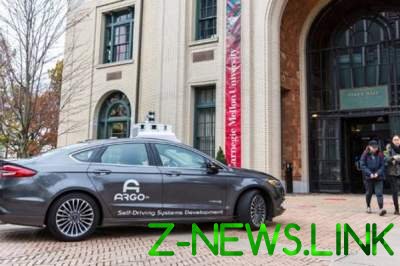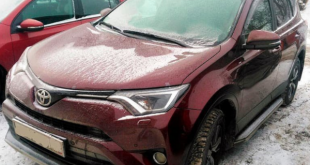 Body language will become clear.
Body language will become clear.
Development of reliable and safe Autonomous cars require the continuous expansion of the boundaries of the possible in the field of information technology and artificial intelligence. In the company-developer of the “drones” Argo AI, the main shareholder of which is a Ford, used the latest technology in the field of computer vision and machine learning. However, the most advanced research is carried out within the walls of institutes and universities.
So Argo AI has established links with the academic community and involved in the development of artificial intelligence for Ford three scholars with unique competencies. Docents from Carnegie-Mellon and Georgia Institute of Technology are developing basic technologies that will help Autonomous vehicles to properly see and interpret the surrounding world, but also to predict the behavior of traffic participants. This “Bagnetu” according to the company “winner imports Ukraine, Ltd.”.
Ramanan of Deva (Deva Ramanan), associate Professor of the Institute of robotics at Carnegie Mellon University, does research in the field of computer vision and machine learning. The main topic of the research scientist Popular Science magazine, in 2012 was named among the 10 outstanding researchers of the year is the recognition of visual images. Ramanan teaches computer programs to “see” people, highlighting certain parts of the body and comparing them to the accumulated database of digital models that include both people and other objects of the material world.
“The most important step towards the creation of safe Autonomous vehicles is endowing them with the ability to identify people, regardless of their size, growth, position in space, – said said Ramanan. – I look forward to the opportunity to develop a solution to this problem together with Argo”.
Lucy Simon (Simon Lucey), also associate Professor at the Institute of robotics at Carnegie Mellon, head of the laboratory of computer vision CI2CV. His expertise includes teaching computers to extract geometric information from static images and videos, as well as the correct “understanding” programs of facial expressions, movements and poses of the person.
“Cooperation with Argo – this is a great opportunity to develop systems that can more quickly and correctly interpret and anticipate events on the basis of three-dimensional images, said Lucy, previously conducted research for Apple, Adobe, Samsung and Bosch. – Students at Carnegie Mellon will get a new fertile ground for further research, we will be able to achieve new progress in the preparation of Autonomous cars to work in real conditions.”
James Hayes (James Hays) – associate Professor School of interactive computing of the University of Georgia where he uses data collected from around the web and crowdsourcing to enhance the understanding of computer situations on the images and improved algorithms and image processing.
“Creating a perceptual system for Autonomous vehicles is very difficult, but also gives us a great opportunity, – said Hayes. – Argo AI we can make learning algorithms to the extent not available in University labs. But we also have the task to create a system that works smoothly in the real world, which does not always correspond to carefully chosen data for academic experiments. It’s the challenges that help me to identify new areas for long-term research in my lab at the University of Georgia”.
Lucy, Ramanan and Hayes will combine work in the headquarters of Argo AI with research activities at universities, which will also be sponsored by Argo. Earlier, the management of Argo AI announced the acquisition of the company Princeton Lightwave involved in the development of optical radar LiDAR for commercial use.
See also: the New flagship of the CMA CGM call in an unusual way
Scanning lidars create two – or three-dimensional map of the surrounding space that allows the Autonomous vehicles to navigate more accurately in urban environments and under difficult weather conditions.
© 2017 – 2019, paradox. All rights reserved.





